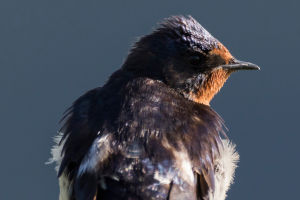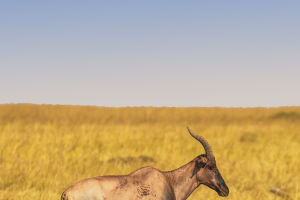The peacock is the largest of the cockatoos.
The head is bright green and the crest blue-green and pointed. The upper tail feathers are particularly long and form a beautiful tail screen.
The true tail feathers are very short and dark brown. Females have no tail screen and their plumage is dull brown and mottled.
The peacock inhabits mainly open areas of the forest and is an omnivore.
The male's plumage is beautiful, mainly green, green-blue and purple-brown, but also white and shiny.
The male peacock's tail feathers extend into a tail screen with various coloured patterns, which is very flamboyant when open, like a fan. Female birds have less colourful plumage.
Male peacocks have bright green feathers with a purple-bronze sheen on the lower back.
The upper tail feathers are particularly well developed and are usually tucked behind the body, but when extended they are about 1 metre long, known as the 'peacock's open screen'.
These feathers are colourful and long and thin, like golden-green velvet, with numerous large eye-like spots of purple, blue, yellow and red at the end. Which reflect the light when the screen is open, like numerous small mirrors and are really bright and colourful.
The male is about 1.4 metres long and the female is about 1.1 metres long. The clusters of plumage on the top of their heads stand tall and graceful.
The female peacock has no tail screen and has a rich brown and greenish back, although she is not as beautiful as the male.
Peacocks are omnivorous birds, preferring to eat fruits such as Sichuan pears and yellow puffs, as well as grass seeds, tree seeds, rice and seedlings.
Animal foods such as locusts, crickets, lepidopterous and coleopterous insects, frogs and lizards.
There are many species of peacocks present in the world. Let's introduce some of the common peacock species.
1. Blue peacock: Blue peacocks are the most farmed species. They live in hilly forests, dry semi-deserted grasslands, shrubs and deciduous forest areas.
Especially near waters, foraging in the early morning and evening with their flocks in the fields, nesting on the ground but roosting in trees.
2. Green Peacock: The Green Peacock is found in South East Asia and is scarce in the wild, preferring open areas of sparse grassland, river banks or landside jungle as well as forest grassland and forest clearings.
3. black peacock: black peacock is a variant of the wild blue peacock. The number is extremely rare, produced in Pakistan, India and Sri Lanka, etc., inhabiting the open sparse grassland or open areas with bushes and bamboo bushes below 2000 metres, life expectancy of about 25 years.
4. White peacock: The white peacock is an albino variety of the blue peacock under artificial breeding.
Snow white all over, with a mutation rate of about 1/1000, which is relatively rare, mainly due to the low frequency of genetic mutations, but has reached a state of population self-sustainability after artificial domestication.
Apart from the green and black peacocks, which are both relatively rare species and belong to protected animal species, the other two species are relatively abundant and can be bred in captivity.


